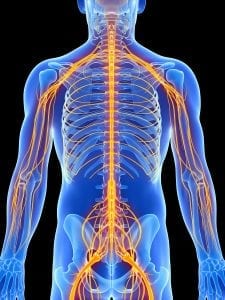On March 20, 2025, we will stop accepting new Military Disability Made Easy subscriptions. For more information about how this change may impact your subscription, click here
How to Apply the Slight to Severe Scale when Rating Muscle Disabilities
- Published:
- Last Updated: October 4, 2022

The majority of muscle conditions are either rated on the Slight to Severe Scale or on limited motion of the affected joint, whichever gives a higher Military Disability Rating. Limited motion is pretty straightforward, but the VASRD’s original wording for the Slight to Severe Scale can be a bit confusing, so I want to break it down a bit further.
The way the Slight to Severe Scale reads seems to imply that the muscle injury must have been caused by a projectile entering the body in order to be rated. If this were accurate, then there would be a great number of muscle conditions that could not be rated.
When looking at the Slight to Severe Scale, the VASRD tries to paint a picture of the kind of disability that would be seen under each severity.
For example, a SLIGHT disability is described as follows:
- A simple wound without infection or debris (bits of bone, shrapnel, etc.).
- An easily treated wound with good healing and function. No cardinal signs or symptoms.
- Small scar with no impairment of function.
While a MODERATE disability is described as follows:
- A through-and-through or deep penetrating wound without serious infection or debris.
- The regular presence of one or more of the cardinal signs and symptoms.
- Small scars with some loss of muscle tone or substance. Some loss of power and a bit more easily fatigued.
These lists are NOT checklists. Your condition does not have to match each bullet point exactly in order to be listed under that category. It simply needs to be a similar condition.
The most important thing to consider when categorizing your condition is the presence of the cardinal signs and symptoms (loss of muscle power, weakness in the muscle, the muscle tires easily, there is pain in the muscle with tiredness, lack of coordination, and decreased movement control).
Each severity requires a certain number of the cardinal signs and symptoms to be present in order for the condition to qualify under that severity. These should be the number one priority. If your condition seems to fit most in the SLIGHT category, but there is one of the cardinal signs and symptoms, then your condition would qualify for the MODERATE category, even if the other qualifiers don’t match.
We were recently contacted by a soldier with a complete rupture of his pectoralis major (helps control the shoulder; Muscle Group II). The condition was not caused by a projectile, and there was no break in the skin. After healing from treatment, he had full range of motion, but also had weakness and loss of muscle tone.
Looking at the Slight to Severe Scale, the condition would be rated as MODERATE. The first bullet point (a through-and-through or deep penetrating wound) isn’t present at all, but both of the second bullet points are. Weakness is one of the cardinal signs and symptoms, so that satisfies the second bullet point, and loss of muscle tone satisfies the third.
Overall, when trying to categorize your muscle condition on the Slight to Severe Scale, remember that the requirements under each severity are simply painting a picture of the type of condition. The most important qualification is the presence of any cardinal signs and symptoms. Beyond that, simply match your condition to the category that most closely describes it.
Recent Posts
TDRL vs. PDRL—Which is better for disability benefits?
February 13, 2025
Leukemias and Multiple Myelomas NOW on the Presumptive List
January 9, 2025
Two MORE Conditions added to the Burn Pit Presumptive List
January 3, 2025
The 2025 VA Disability Rates are here!
December 2, 2024
About Us










24 Comments
I have had several MRI's and each result stated that moderate to severe what should I expect at my C & P examine?
Hi Donald –
What is your condition that is shown on the MRI? Without knowing the diagnosis of your condition, it's impossible to really say what to expect.
Dr. Johnson, All of the following information is in my medical record. This happen while in basic training. (1973) I broke my right hand (fifth metacarpal) The VA just rated it as 0% finally, it is my domain hand. I am having some numbness in my little and ring finger, my forearm cramps from time to time, I just had a MRI done on my right shoulder. The PA said it was not torn completely, however he was going to get with the Dr. to see what's next. I take Ibuprofen daily before I go to work. I am working two jobs (part time). It is hard for me to go to the doctor every time I hurt. I get up at 02:45 I work 6 hrs. go home change clothes go to next job work until 1730. I was given 10% tinnitus. I have gastro-intestinal issue which is another issue that's on my medical record, I don't know what to do, I need some advise how to fight this battle. I cannot afford an attorney
Hi Walter –
I need a bit more info before I can best guide you.
So the only condition that occurred while on active duty was the broken metacarpal, correct? How long after separation did the other conditions develop? I'm trying to figure out exactly which conditions are truly service-connected because that seems to be the real issue at play. If you can provide more information, that would help.
What I am filing claim for are Hypertension not service connected, hearing loss right ear 0%, service connected, tinnitus 10% service connected, left hearing loss denied not service connected, right hand 0% service connected, this was just given to me.
This was the explanation given. Service connection for hand condition right(claimed as right hand broken in basic training) is denied since this condition neither occurred in nor was cause by service. While your service treatment records reflect complaints, treatment, or a diagnosis similar to that claimed, the medical evidence supports the conclusion that a persistent disability was not present in service. We did not find a link between your medical condition and military service. The evidence does not show a current diagnosed disability.
Hypertension is not on my medical record. I had a visited with the QTS staff in Atlanta. My hand has always bothered me off and on. The doctor who did my evaluation ask what kind of work did I do, I told her a Police Officer with over 30 years, she then ask my highest position Chief. She then ask which was my dominant hand right, then she wanted to know if I still was certified as a Officer.
The other issues occurred on my ship. I was aboard the USS Enterprise Air division. It took me a long time to file, My pride was stopping me. If you need any more information
The issue is that it seems on paper as though your hand fully healed and is no longer a disability. You had the original injury but then had a full career with no real additional medical treatment of that hand. You currently do not have a condition diagnosed in that hand or any treatments being done, correct? Then to the VA, there is no disability. If you still have problems, the only way to qualify for VA disability is for you to get a diagnosis and start receiving treatment. You'll need your diagnosing physician to claim that the current condition is "more likely than not" caused by the original injury in basic training. Without this statement, it is just as likely that time and/or other things caused the current condition, not your military service.
Overall, I think this is going to be a tough case to win, but if you follow the above advice, you'll have a chance.
I just found the letter I got back on 12/08/2015 in
reference to my right hand. X-ray was done and the finding was scattered changes related to osteoarthritis. Thanks for all of your advise and information
With this evidence, you need a specialist to state that they believe that your current osteoarthritis is "more likely than not" the result of the basic training injury, and you should be good to go.
Hello Dr. Johnson, I have several health issues, but I received a P3 for my feet and now referred to MEB. I have osteoarthritis in both feet. The right foot was so severe the bone began to grow over the tendons, making it extremely painful. I had surgery to shave the bone down, but this did nothing to alleviate the pain. I recently had a second surgery and had an implant inserted in the large toe. This is more painful than before I started the entire process. I have not been able to wear boots in a year. I was told I will eventually need surgery on the other foot. Just for this, I am not quite sure what the rating is based on, the arthritis? ROM? I have been going to PT for about 8 months with no pain alleviation. Any advice would be extremely appreciated.
This is a tricky condition to rate. Osteoarthritis is usually rated on limited motion as degenerative arthritis, but there technically isn't a limited motion rating for the feet. If you can't use both feet at all (non-weight bearing, wheelchair bound, etc.), then it would be rated 100%.
Since I don't believe this is your case, finding the best rating is difficult.
Most foot ratings aren't very high. The rating or bone spurs (which you clearly have), is only 10% per foot. They could rate you there, but with the level of pain you're having that may not be enough.
Ultimately, they are going to look at your overall functioning. How well can you walk on it, even with the pain? Do you have to have a cane or assistive device? If you are fairly limited, they might push it and have you rated 30% under the broken bone code (5283), but this would only be if it were incredibly severe, close to full loss of use.
Ultimately, I won't be able to fully predict what they will do. They'll look at your overall functioning and then determine which code best reflects the condition and symptoms.
http://www.militarydisabilitymadeeasy.com/thefoot.html
Dr. Johnson:
I am currently rated 10% for both knees. My right knee has worsened and my doctor wants to go in arthroscopically and clean up the cartilage.
My doctor believes this will provide relief for 3 to 5 years before I need a total knee replacement. Would the surgery and later TKR meet the criteria to change my rating?
The VA will temporarily increase your rating to 100% during your convalescent period after the surgery.
http://www.militarydisabilitymadeeasy.com/vasrdprinciples.html#conval
After the convalescent period, the VA will re-evaluated your condition and determine the new rating based on any remaining symptoms. It's impossible to predict what this rating will be because it is impossible to predict the outcome of the surgery. If the surgery fixes everything and you have no symptoms at all (unlikely), it will be rated 0%. If there are symptoms, it will be rated on their severity.
Once the TKR occurs, however, it will then be rated under code 5055.
http://www.militarydisabilitymadeeasy.com/kneeandleg.html#knee
The minimum rating for this is 30%.
Dr. Johnson,
I've been doing research into my bilateral exertional compartment syndrome and it seems that the VA applied the wrong code to my claim (code 5262 instead of 5311). It's too late for me to appeal but I do plan on starting a new claim through the DAV. I talked to a VA rep yesterday and was basically told to go pound sand and that code 5262 was the closest analogous code to compartment syndrome (which makes no sense since it's a muscular issue NOT a skeletal issue). The VA even approved surgery for my compartment syndrome (which hasn't happened yet). All the evidence provided during my initial claim revolved around numbness and pain over a five year span (2005-2010) with multiple temporary no running profiles until I was finally diagnosed with bilateral compartment syndrome and given a permanent no running profile in 2010. At an absolute minimum I should've landed a moderate rating for code 5311 which would've netted me a total rating of 100% (I'm currently rated at 90%, total VA math lands me a little over 94%). Long story short, how should I approach this to ensure the best chance of a favorable outcome? Thanks much.
This is odd. You are correct that compartment syndrome is a muscle condition and is usually rated on the muscles affected:
"Anterior compartment syndrome is a condition where the muscles in a part of the leg swells, cutting off blood circulation to the muscles. It is rated under one of the leg muscle codes, depending on which muscles are affected. See The Foot and Lower Leg Muscles and The Buttock, Hip, and Thigh Muscles pages for rating muscles of the leg."
from http://www.militarydisabilitymadeeasy.com/analogous.html
If it has been more than 1 year, then you can still appeal, but you have to go directly to level 2, which might take more time until RAMP is open to everyone.
http://www.militarydisabilitymadeeasy.com/isyourratingwrong.html#va2
Dear Dr Johnson,
I need some advise on how to get the VA to rate my arthritis in my right hand. I recently had an X-Ray and these are the findings: There is joint space narrowing with mild marginal osteophytosis of the first digit IP joint, and second through fourth DIP and PIP joints bilaterally, with joint space narrowing and moderate osteophytosis of the first CMC joint. No significant erosive changes.
I am having continued pain in the DIP joints on my middle, index and ring fingers. What code will that fall and will they do an motion test when I do my C&P. how can I prepare. Currently have my index and ring finger splinted and also wear a brace for numbness. Please advise I need 20% in order to be 100% disabled
The key to your case is proving service-connection. If this was diagnosed more than year after service, it will have to be secondary to another service-connected condition in order to qualify.
http://blog.militarydisabilitymadeeasy.com/2018/01/secondary-conditions-for-va-disability.html
As for the rating, since finger joints are considered minor joints, they will only qualify for a 10% rating due to painful motion under code 5010.
http://www.militarydisabilitymadeeasy.com/diseasesofthemusculoskeletalsystem.html#arthritis
A higher rating can only be given if there is enough limited motion in the fingers to qualify:
http://www.militarydisabilitymadeeasy.com/thehand.html#limo
However, the numbness means that a nerve is also involved. Nerves can be rated separately, so that could qualify you for an additional rating. Make sure the nerve involvement is officially recorded and diagnosed.
http://www.militarydisabilitymadeeasy.com/uppernerves.html
Dr George P. Johnson Aug 18 2018 at 1810 MRI: Cervical MRI with and without contrast reviewed with the patient today which reveals evidence of prior ACDF C4 to 7 . Overall well maintained cervical lordosis without any abnormal cord enhancement. At C2/3 there is a paracental disc protrusion without significant central canal stenosis as well as left greater than right facet hypertrophy leading to left foraminal stenosis. At C3/4 there is a broad right eccentric disc osteophyte complex and posterior liqamentum flavum enfolding with sac = 9 mm and bilateral uncovertebral hypertrophy resulting in bilateral foraminal stenosis. At C4/5, C5/6 and C6/7 there is bilateral uncoertebral hypertrophy leading to residual neural foraminal stenosis. C7/T1 is unremarkable . Lumbar MRI with and without contrast reveals evidence of overall well maintained and lumbar lordosis with appropriate anatomic alignment. Vertebral body height are well maintained. There is evidence of multilevel degenerative disc changes as well as congenital canal stenosis. At L1/2, L2/3, L3/4 there are broad disc protrusions and bilateral facet hypertrophy leading to significant bilateral foraminal stenosis at each level. At L3/4 there is fluid signal in the bilateral facet joints. At L4/5 there is a left eccentric broad disc protrusion as well as bilateral facet hypertrophy leading to significant bilateral, left greater than right, foraminal stenosis. At L5/1 there appears to be a partial osseous fusion of the L5/S1 disc with broad disc osteophyte complex which is eccentric to the right with bilateral facet hypertrophy and significant bilateral foraminal stenosis.—— Brain MRI with and without contrast reveals evidence of no acute intracranial pathology. There are chronic microangiopathic changes in the periventricular white matter.
Cervical CT scan without contrast reveals evidence of prior ACDF C4 to C7, well aligned without evidence of hardware complication. As noted in the MRI, there is bilateral neural foraminal stenosis noted to secondary to uncovertebral joint hypertrophy at C4/5, C5/6 and C6/7. At the C4/5 and C5/6 there is good bony fusion however at C6/7 ther is evidence of nonunion pseudoarthrosis. Proximal adjacent disc heights are well maintained. Distal adjacent degenerative disc heights noted. At C7/T1 there is evidence of decreased disc height and anterior breaking osteophyte formation. In addition I have underwent
surgeries for right TKA, 25 May 2018. Th left TKA, 2015. I have had bilateral carpal tunnel release surgery with minimal imorovement in the hand symptoms. I have also been diagnosed with tinnitus and right ear hearing loss, minimal.I also experience the loss of bladder and stool control. We are waiting on more follow up films on ankles, hip joints and thoracic spine. Well Sir, I know its alot but if you would be so kind, and offer your experience and knowledge.
The spine can only receive two ratings: one that covers all cervical conditions and one that covers all lumbar conditions. You'll receive two since both your lumbar and cervical spines have diagnosed conditions. They'll either rate you under Intervertebral Disc Syndrome or on limited montion, whichever is the predominant disability and provides the higher rating.
http://www.militarydisabilitymadeeasy.com/thespine.html
Knee replacement is rated under code 5055:
http://www.militarydisabilitymadeeasy.com/kneeandleg.html#knee
Carpal tunnel is rated under the Median Nerve codes:
http://www.militarydisabilitymadeeasy.com/uppernerves.html#median
Tinnitus:
http://www.militarydisabilitymadeeasy.com/theears.html#e
Hearing Loss:
http://www.militarydisabilitymadeeasy.com/theears.html#system
The incontinence is rated under the conditions that cause it:
http://www.militarydisabilitymadeeasy.com/thegenitourinarysystem.html#urcon
http://www.militarydisabilitymadeeasy.com/thedigestivesystem.html#rectum
IAM at 40 peren 10 Achilles tendon30 for secondary knee surgery broke Padilla 3places and since surgery I have no motion in knee flares up schooled and knee I was just given0 percent migraines 0 percet knee scare my back has worn degenerated right now my file is at appeals c ourt on remand dr.Said I was able to do sit down job but file statesI can't stand nor r sit no more than different mins on both dr. Did not read file now should they send me to Dr to say I can't that's what the judge ordered and since the file wasn't ready and Dr base it on appe rance not D ocuments so should get another ac cc urate opi mm ion by bringing my c file showing that I'm unalet to work do to the above issuesPTSD and mstw hi ichix it service cc injected do I have a hance for e mplosbility
To qualify for unemployability, you have to show employment history records proving that your service-connected medical conditions are the direct cause of your inability to keep a job or obtain a new one. Medical records that also show the severity of the condition in agreement with the reasons your unable to maintain a job is essential. The more concrete medical evidence as you can provide, the better, so if your medical records are conflicting, definitely seek additional opinions. The VA needs to see evidence that agrees in order to have a clear picture of the conditions.
While in the 82nd I developed extreme heel pain. The PA that treated me performed three extreme treatments to each heel.He used a large gauge needle to extrude crystalline steroid into each heel over a short period of time. The result was he actually cut into my fascia(s). I did not receive any relief from his treatments and was sent to podiatry where it was deemed i would need to have these tears repaired. The Podiatrist upon opening my entire heel discovered that the multiple and excessive incisions made by the needle work done by the PA at the 82nd had fractured the heel material which in turn had let the nerves grow into it like a tree root. He then removed the entire heel pad from the foot and then repaired the cuts to my fascia caused by the treatments by the PA. I had a nine month recovery before I was allowed to have the other foot done , and it was the same result on second foot with the heel pad having to be removed, and then the fascia repaired. I am now 3/4 of an inch shorter, and i stand on the heel bone with constant pain in both feet. I only get temporary relief with orthotics. I have have never been free of the pain since the surgeries in 1998 and 1999.
Have you ever submitted a claim for VA Disability? Because the condition was caused by a military PA at a military medical facility during active duty service, it qualifies as service-connected.
http://www.militarydisabilitymadeeasy.com/vadisabilityclaim.html
http://www.militarydisabilitymadeeasy.com/service-connected.html
Since this is a very unique condition and there isn't a rating for a condition of the heel, the VA would rate it based on the overall symptoms and effect they have on your foot's ability to function, most likely under code 5284.
http://www.militarydisabilitymadeeasy.com/thefoot.html#r
Dr. Johnson,
I have shrapnel in the following muscle groups: III,V,VII,IX,XI,XV and they all have the following cardinal signs: loss of power, weakness, lower threshold of fatigue and fatigue pain. The frequency for each one was occasional. How would these muscle injuries be rated?
The VA will only give a single rating for a limb if multiple groups are affected, but will raise the worst rating to the next level.
So III, V, VII, IX are all arm muscles. If they are all affected in the same arm, then only a single rating can be given. However, since the muscles affect multiple joints, the worst rating can be increased to the next level. So if Group III qualifies for a 20% rating and the others only for a 10% rating, then the 20% rating would be raised to the next level (30%). A 30% rating would then be the final rating given for the entire arm.
http://www.militarydisabilitymadeeasy.com/shoulderandarmmuscles.html#iii
Similar circumstances would apply to XI and XV if they affect the same leg.